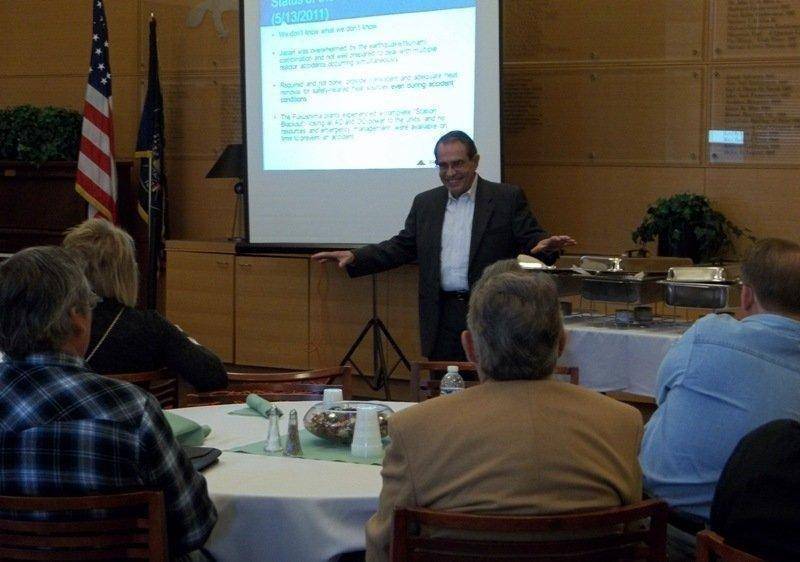When representatives from Blue Castle Holdings gave two presentations on their plans for a nuclear power plant last week, they brought in Nils Diaz, the former Chairman of the United States Nuclear Regulatory Commission, who is now their Chief Strategic Officer, to add legitimacy to their arguments for their plans.
After the recent catastrophic failure of the Fukushima Plant in Japan, locals were left wondering how the failure would affect plans for the BCH Plant proposed near Green River. BCH released a statement offering their condolences to those affected by the disaster in Japan, and offering assurances that with assistance of the NRC, they would “ensure that the safety, security and reliability of the design considerations for proposed new nuclear power plant will exceed all possible events to ensure the public health and safety.”
In last week’s meetings, the companyВ gave a more thorough explanation and assurance, which was echoed and reaffirmed by the former chairman of the NRC, Diaz. Diaz, who served on the NRC from 1996 to 2006, is a nuclear engineer, and was chairman of the commission from 2003 to 2006. Asked if he thought it was a good idea to build the plant in the area, Diaz responded, “Absolutely.”
He explained that his time with the commission gave him a unique understanding of nuclear power and the concerns many have. “For ten years of my life I was really dedicated and committed to protecting public health and safety and the environment,” he said. “I saw my experiences as making me a better person and a better professional. It gave me an understanding of the concerns people have, how we need to work out the extra mile to make sure that everybody realizes that we are going to do the impossible to prevent any injury to members of the public.”
Diaz presented community leaders and interested citizens an explanation of the failure at the nuclear plant in Japan, and offered evidence as to why such a catastrophe would be “highly unlikely” at the proposed Green River facility.
Explaining the events in Japan, Diaz revealed that he believed the operators had simply “not imagined” that two such catastrophic events could occur at the same time. He said that though they had some plans in place– specifically back-up dieselВ generators, in the event that the plant lost power– the events that occurred were beyond what they had prepared for.
He explained that the plant in Japan was relatively old, having been built over 40 years before, and he placed some of the blame on officials choosing not to make upgrades. ” Fukushima could have been upgraded, they just chose to do the bare minimum, unfortunately,” he said.
Diaz said that after Sept. 11, 2001, he along with his colleagues understood that they had to “go beyond where we had ever been”, with regards to safety at U.S. facilities. And since then, the NRC has taken steps to upgrade facilities and prepare for all possible circumstances, including coming up with 23 additional ways to “cool” a plant were a shutdown to happen here.
Beyond the protection those upgrades would offer, Diaz revealed that the design of the proposed plant plant is inherently safer. “The reality is that whatever plant we put in here, will be orders of magnitude safer, stronger, more capable, safer, better coordinated,” he said. ” We don’t mess around with this.”
Diaz presented five advantages the new plant design would offer over that which failed in Japan, including being safer by at least two orders of magnitude, having a simpler design, using a standardized design and materials, being easier to build and operate, and being passively cooled.
“I think it is a wonderful thing,” he expressed in an interview after the presentation. “With the problems of coal not being able to be licensed, and with problems with pollution here in Utah, this will provideВ clean energy. It will be expensive to build, but very economical to operate. It will provide a stable output that’s always there, with low cost and no impact on the environment or public health and safety.”

